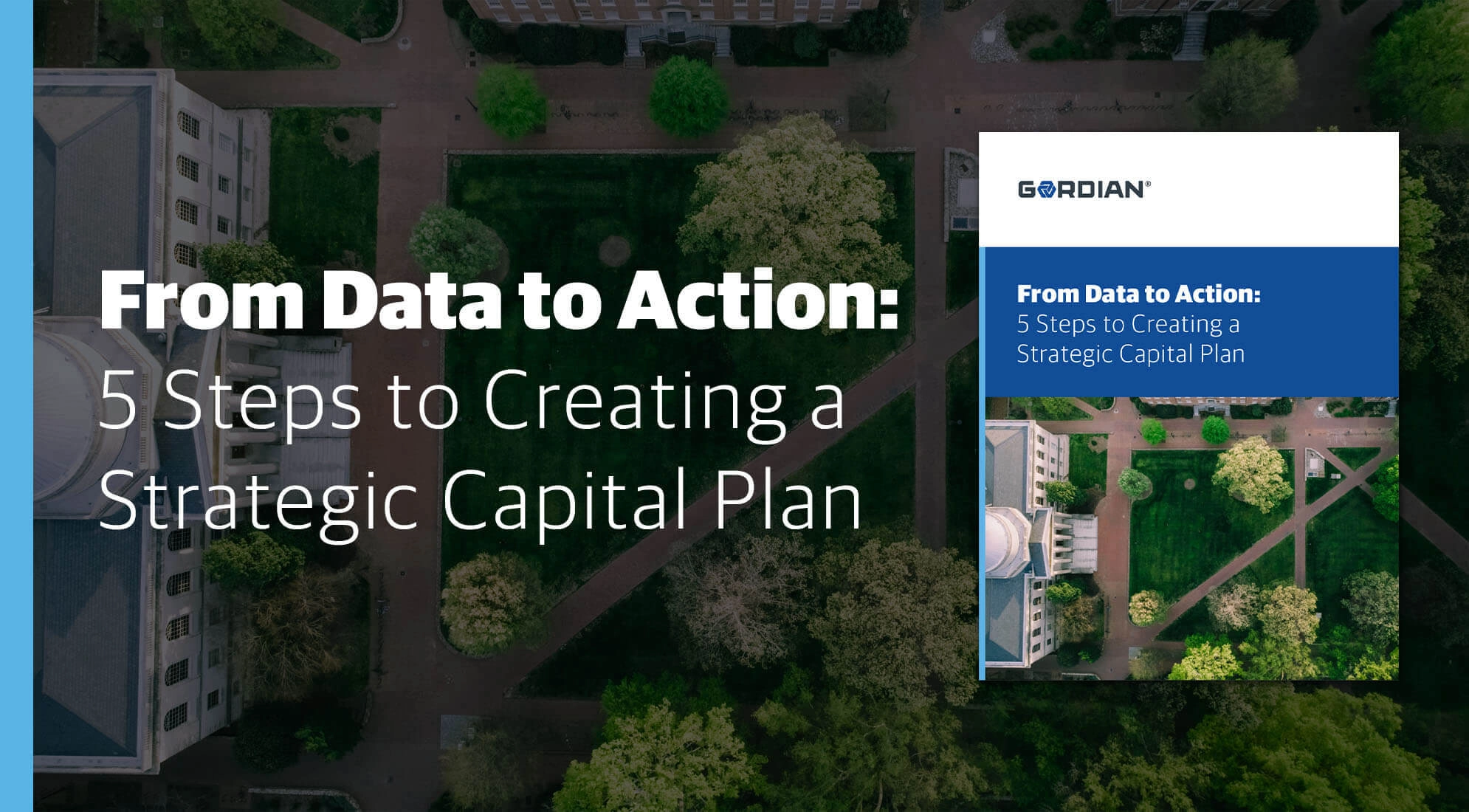Leveling Up the FCA: The Soft Metrics That Should Inform a Capital Plan
November 13, 2020
I love college campuses. The convergent harmony of stately lecture halls functioning effortlessly alongside state-of-the-art testaments to human ingenuity is a unique joy. There’s nothing like it. Next to a 200-year old campus icon you might find a brand-new research facility. In the shadow of a new athletics complex may lie centuries of unblemished architectural history. Striking the balance between old and new and maintaining proper building function is the art and science of higher education facilities management.
Sustaining this equilibrium requires a capital plan that prioritizes the institutional investments that are most mission aligned. Achieving such a plan means gathering information about and discussing facilities as assets, not mere brick and mortar buildings. It means providing context that goes beyond dollars and cents. That’s especially true now, as the economic landscape of higher education is shifting quickly. Campus decision-makers require an understanding of facilities that zooms in further than a traditional facilities condition assessment (FCA) is built to do.
But before we get into that, let’s look at the value an FCA traditionally delivers.
The Baseline: Age and Condition
Facilities, like people, age differently. Some folks are active and vibrant well past retirement age. I myself did not run my first marathon until I was 50. Some people age poorly or too quickly, and their physical conditions do not match the ages on their birth certificates. Any good FCA will show you what facilities are old on paper alone and which are old in their bones.
While age is certainly a factor in assessing the function of a facility, it must always be tempered with condition. Just because a building is getting up there in years does not mean that it is time to hire a wrecking crew. Your facility might be 60 years old but have the body of a 30-year-old.
Age and condition should not be confused, but they should not be divorced either. Age is absolute but condition tends to be much more variable — together they are like a mathematical formula, inputs into an equation describing facility health. An FCA can give you the answers to that formula.
Where the Traditional FCA Falls Short
An FCA can help create a baseline assessment of all your facilities needs, and that’s valuable. You can’t solve problems you don’t know you have. But here’s where we start to get into what a traditional FCA can’t do for higher ed leaders. A list of deficiencies, while helpful, is just that: a list. Alone, that list cannot inform strategic conversations about campus-wide needs and alignment to prioritized strategic investment targets. An FCA can’t tell you what order to complete renovations and updates and why said order gets you closer to your goals. Turning the corner from project list to strategy requires gathering info you just won’t find in an FCA. Let’s explore three of those soft metrics.
Building Function and Mission Alignment
There are many reasons to move a capital project to the top of the list. For example, a facility manager might want to first tackle the systems that are most likely to fail. That same facility manager might not feel comfortable telling the president of the university that she needs to wait to have the carpet in her office replaced. In either case, system failure or pressure from high places, the facility manager’s reasoning is valid. But the best reason to move forward with a project is alignment to the mission of the institution.
Institutional mission and vision are critical elements to incorporate that are often overlooked during the FCA process. Ask pointed questions about building’s use and programmatic fit and answer them honestly: What role does the facility play? Do we still need this facility or is it an emblem of a bygone era? Is it essential for programmatic purposes? Is it effective at delivering its programmatic purpose?
Don’t spare questions about mission alignment, either. Ask: Does the asset directly connect to a mission imperative? Do facility conditions match the ideal campus experience and meet community standards?
Capital planning decisions are better informed when someone has asked, “Do we still need this?” or “Should we repurpose this?” in advance of a critical failure. It’s a good reminder that deciding where not to invest can be just as impactful as deciding where to invest.
Historical Significance
Historical significance is a two-edged sword. It is great to be on the winning side of the scoreboard and have only positive role models and contributors in your “historically significant” portfolio. But, through no fault of your own, history sometimes comes back to bite you. From City College to City Hall there is a renewed engagement on the topic of historical significance. With this rapid rate of this change, it is important to take a fresh look at your facilities and add the influence of historical connection or reputation to your “invest or divest” strategic plan.
Identify potentially high-risk properties and come up with an estimate now for each outcome (remove, rename, repurpose). That way, you possess all the data needed to weigh your risks and options when this societal change comes to campus. Similarly, now is a great time to seek out all the positive historically significant sites on your campus to ensure that you are maximizing the return on those physical assets. A deeper review of updated needs and conditions of historically significant structures can help you best protect these important campus contributors. Such a review transcends the traditional FCA.
Program Modernization
As time rolls forward, demands on facilities inevitably change. But they don’t all change at the same rate. A new facility that primarily hosts math or language courses will look quite similar to those constructed 50-100 years ago. Conversely, a science facility will bear little resemblance to a facility built just 30 years ago.
With a heavy focus on replacement-in-kind projects, traditional FCAs fall short on identifying upgrade and installation projects which directly benefit academic programs. Seeking out leaders within academic departments to find how they envision the future of their programs provides invaluable context to facilities needs. In the best cases, both facilities and academics groups will find common pain points and create win-win projects which address critical facilities needs and desirable programmatic upgrades.
Leveling Up the FCA
The experience of a college campus is always greater than the sum of its parts. There is an alchemy in the architecture, a magic bigger than bricks and pipes and other building components. These “soft” considerations can’t be captured in a facilities condition assessment or confined in a report, but they need to be taken into account in any long-term planning discussions. Campus leaders need to take the traditional FCA to the next level by layering in these data points to build a strategic long-term plan and give themselves tools to redirect quickly when things change.
Share this:





